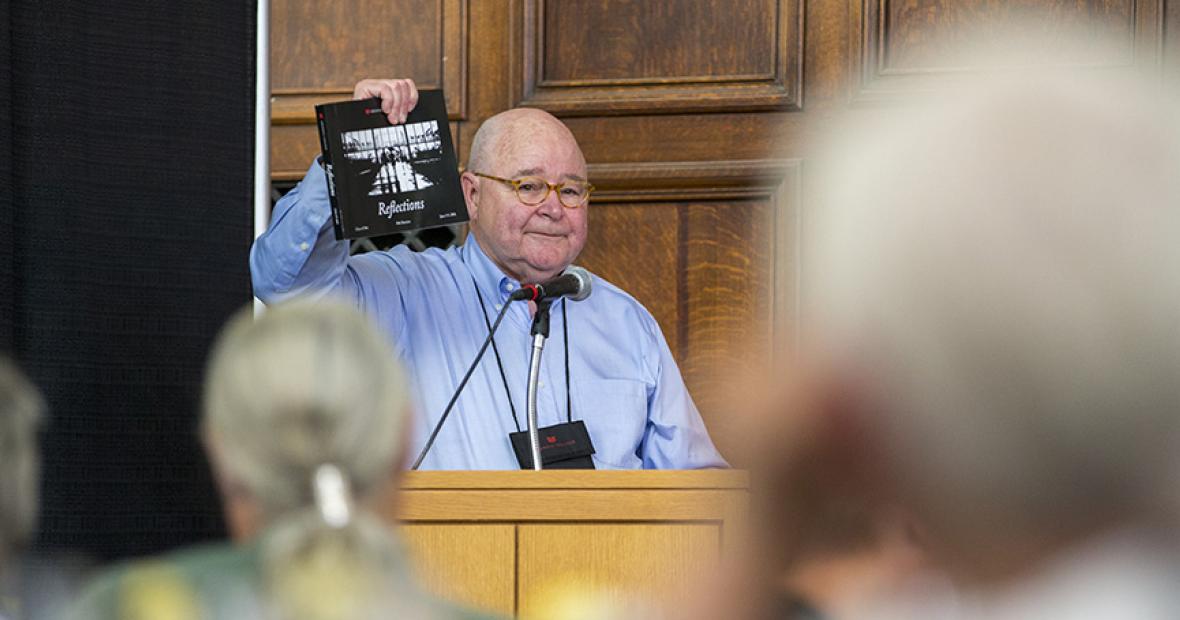Building a Legacy
The class of 1966’s united funding effort
The class of 1966’s 50th Reunion gift of $3.6 million is the largest such gift in the history of the College, $1.2 million more than the previous record set by the class of 1963. More than $1 million of the gift will go to the Class of 1966 Endowed Scholarship Fund and eventually fund one student’s entire Grinnell experience; it’s one of only two such scholarships established by an individual class. So far more than $70,000 of the reunion gift has been designated for a named space in the planned Humanities and Social Studies Complex (for its 25th Reunion, the class of 1966 designated funds for the Writing Lab in Alumni Recitation Hall). There are further designations for financial aid, the Pioneer Fund, and a number of personal passions of individual class members. The total encompasses outright gifts, pledges, and planned gifts.
Jim Holbrook, class fund co-director, attributes the success of his class’s giving to a combination of the right people and the right circumstances. Holbrook and Laurie Houdek Hill, co-director, worked with Ruth Koehler Bergerson, class agent, and the fundraising team of David Maxwell, Anne Campbell Spence, and Ed Atkins. Although Holbrook emphasizes each person’s specialty and the significance of their contributions to the class’s efforts, he singled out Bergerson for her long-term commitment. “Ruth is the golden thread on whom we have strung all our beads of memory,” Holbrook says. He also speaks of her as a maternal figure to the whole class. “She holds us together,” he says, “And she shares information about all of our far-flung siblings.”
Holbrook’s own contribution is not to be ignored. He made a substantial planned gift that served as the lead gift for the class. What really “blew the doors off,” he says, was an anonymous seven-figure gift.
The class of 1966 aimed to break both the total giving record and the class participation record. They have comfortably broken the former but have not yet surpassed the latter. The class set the bar high with a goal of 66 percent participation. As of June 1, they had exceeded 56 percent, but it remains to be seen whether they’ll set that second challenge for subsequent classes to try to beat.
Holbrook attributes the class’s fundraising success to a healthy level of competition with the class of 1965 and work on the class’s memory book. But more than anything else, it was the forces that shaped the class of 1966 while they were students in the early- to mid-1960s. In October of their first year, they witnessed the Cuban Missile Crisis. The following year John F. Kennedy was assassinated. The Gulf of Tonkin incident colored 1964, and 1965 saw a massive increase in troops being sent to Vietnam. Each summer a number of students would travel to the South and participate in the civil rights movement. And when students weren’t directly involved in world-shaping events, they followed them closely on television. The seismic shifts happening across the United States and the world resonated with these students and shaped their views and politics — and it also drew them together.
The class is collectively considering its legacy. Its members want to contribute to the well-being of the world, and they choose to do that by providing access and resources to future Grinnellians.

